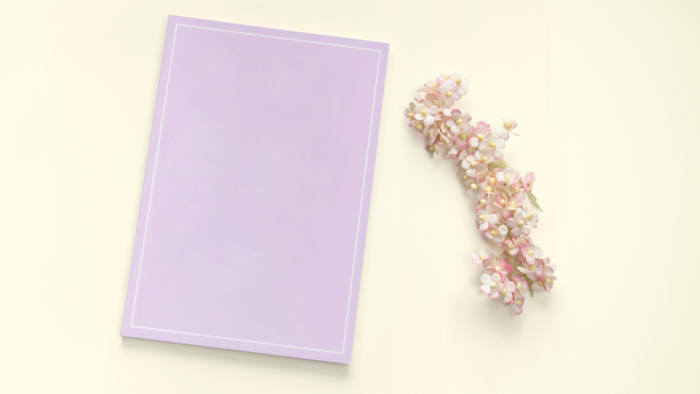So, you’ve written a book, however now you need to figure out how the outside is going to accurately reflect what’s on the inside.
Getting started on your first book cover is truly one of the most exhilarating moments in the publishing journey. It’s often the first tangible glimpse of your work, where your book starts to feel like a real product. Since first impressions matter this excitement can quickly turn to anxiety. What if your cover doesn’t resonate with readers? What if it’s off-genre?
Creating a captivating book cover is an essential part of the publishing journey. It can make or break a reader’s decision to pick up your book. We’ll walk you through what you need to know about book covers, the importance of hiring a professional designer, and how to collaborate with your designer to ensure you end up with a cover that truly represents your work.
What You Need to Know About Book Covers
Your book will be judged by its cover, and that is normal
We know the adage: Don’t judge a book by its cover. But the reality is that people do judge. Our brains process visual information incredibly quickly, making design a powerful tool to attract readers. A great cover can pique reader interest, convey your book’s genre, and entice potential buyers. A bad book cover can denote that the time and budget weren’t put into the outside of the book — and can undo the appeal of content inside the book, no matter how great the writing is.
There are objectively “good” and “bad” book covers
Of course, we know a bad book cover when we see it. Good cover design is not purely subjective. A successful cover effectively captures the essence of the book, and in turn, attracts the intended audience. A great cover should make potential readers say, “I need to read that.”
Elements for a good book cover
- Imagery: The imagery should match the period and tone of your book. For example in a dark-ages fantasy epic, modern hairstyles or clothing would be out of place. Ensure that multiple images work well together, adjusting colors as needed for consistency.
- Color choice: A unified color scheme enhances the overall aesthetic and keeps the text legible against the background. Use colors that complement the imagery. A color should be drawn from the images or act as a direct contrast, avoiding any random clashes.
- Contrast: Contrast helps your cover stand out. Use stark contrasts between figures and backgrounds to draw the viewer’s eye. Light against dark or vice versa is effective in making elements pop.
- Font: Choose fonts that resonate with your book’s genre. A chick-lit cover, for example, might use a whimsical font, and historical romance could benefit from an elegant script. Consequently, the right font conveys the essence of the book, while the wrong choice can mislead potential readers.
- Typography and composition: Pay attention to how your title and author name are arranged. Well-aligned text creates a professional look, like stacking the title can help maintain visual balance. Composition is key to a visually appealing cover. Consider a grid layout for balance, with careful placement of subjects and text. Ensure that text spacing is equal or purposefully unequal for a polished look.
- Plan for the future: Want to incorporate some blurbs or reviews on your cover? Make sure your designer leaves a good amount of space on the front and/or back of your cover to accommodate future blurbs for final copies or additional print runs.
Create a cover design brief
Whether your publisher is handling your cover design or you are seeking a designer, putting together a book cover design brief can help keep all relevant information in one spot. This is a vital tool of communication between you and your designer, ensuring that both parties are aligned on expectations and vision, and the ideal scenario would involve the designer reading your book, however, that isn’t always practical, your brief serves to encapsulate the key elements they need to know.
Essential elements include:
- Book title and author name
- Tagline (if applicable)
- Book size and page count
- Publishing platform (for technical specifications)
- Genre (with any nuances or combinations explained)
- Audience description (condensed into key ideas)
- Book description (blurb and author commentary)
- Specific design ideas (what you want to see)
- Back cover information (tagline, blurb, author bio, testimonials)
- Author branding elements (logos, color palettes)
- Book format (paperback/hardback details)
What You Need to Know about Cover Designers
You’re armed with your cover design brief, now what?
You should not design your own book cover
It’s best to leave cover design to the professionals who understand the nuances of designing book covers. If you are working with a publisher, they likely will handle your cover design.
Preparing to hire a book cover designer
In the hiring process, it’s crucial to be prepared:
- Identify your target audience: Understanding who will read your book is crucial. Identify your audience by demographic details (age, gender, income), interests, values, etc.
- Look at LOTS of book covers: Browse through covers in your genre and beyond to understand what works. Trends in 1980 aren’t the same as trends in 2024, however, so pay close attention to design trends and tropes, and when the book was published. .
- Narrow down your favorites: Save a selection of covers that embody elements you like. This will provide visual references for your designer. One cover may have a font you like. A second cover may have a color scheme you enjoy.
- Create a mood board: Collect logos, artwork, and images that capture the aesthetic you envision for your book cover.
Working with Cover Designers
- Schedule a call if you can: Use phone or video calls for initial discussions, as they facilitate clearer communication. If a phone call isn’t possible, keep clear notes via email or elsewhere that you can refer back to.
- Share your inspiration: Provide your designer with your research before the call to give them a sense of your style. Be specific about the book’s message, its spirit, and the elements you envision for your cover. Consider what plot elements or imagery should be featured. Summarize your book in a concise blurb that will capture its essence.
- Discuss your vision: Clearly explain your book’s genre, target audience, what you like and dislike about the reference covers and the emotions you want to evoke. Make sure to discuss any design elements you want to avoid. Listing colors, fonts, or images you dislike can save a lot of back-and-forth and help the designer steer clear of unwanted concepts.
Communicating with Cover Designers
- Maintain communication: Start conversations with your designer early in the process and keep lines of communication open. Regular check-ins and deadlines can help clarify ideas and answer questions as they arise.
- Request mock-ups: We recommend requesting at least three initial designs to choose from. This gives you options and sparks discussion. Designers will have different rates and stipulations as to how many mock-ups they will provide. Review any contract you’ve signed to see what your designer will provide you.
- Provide constructive feedback: Don’t hesitate to voice your thoughts about the initial designs. If one design stands out, give specific feedback. If not, articulate what changes you’d like to see. Remember, you’re both working toward the same goal!
Check out more on working with a book cover designer in this interview with Books Forward author Nancy McCabe and her cover designer Maryann Appel.
Conclusion
A compelling book cover can affect your book’s success. understanding the design process is crucial. From recognizing the importance of professional design to collaborating effectively with your chosen designer, this guide provides the insights you need to create a cover that captures your book’s essence and draws readers in.
In Books Fluent’s interview with cover designer Eric Labacz, he emphasized the importance of effective imagery, typography and color. A great cover is a combination of creativity and strategic design choices. Follow these guidelines you can navigate the book cover design process with confidence. This results in ensuring that your book stands out on the shelf and online.
Ready to get started?
Need help designing the cover for your upcoming book? Fill out our contact form to get in touch with our team!

Jennifer Vance is a publicist at Books Forward, an author publicity and book marketing firm committed to promoting voices from a diverse variety of communities. From book reviews and author events, to social media and digital marketing, we help authors find success and connect with readers.
Interested in what’s possible for your book sales and building readership? Check out our services, tell us your goals, and get a customized publicity campaign tailored just for you.


